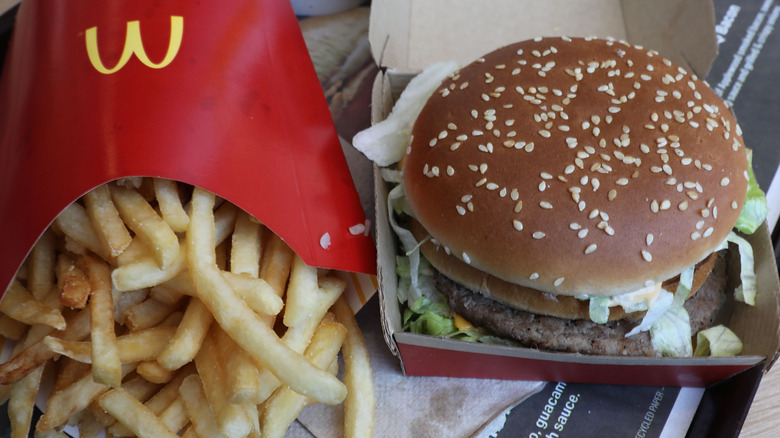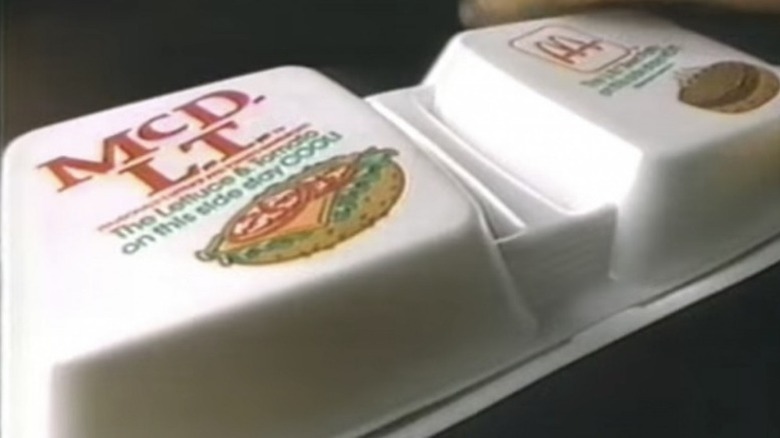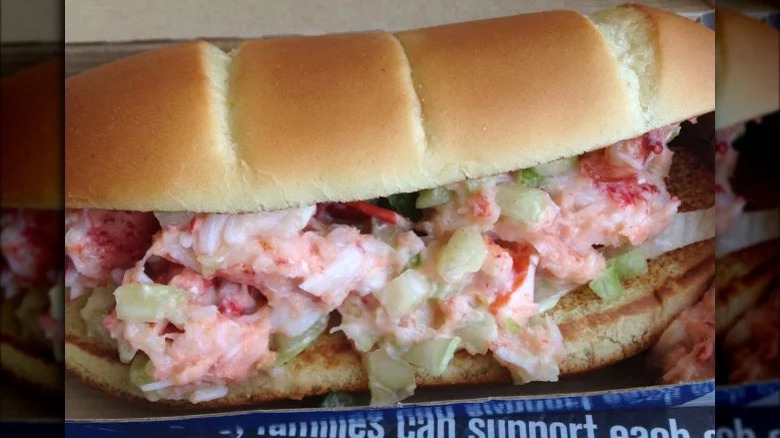The Failed McDonald's Burger With The Hot Side And Cold Side
McDonald's is probably the most iconic fast-food brand in the world. From the iconic golden arches to the familiar, strangely compelling Big Mac, McDonald's has become part of the cultural landscape in ways no other fast-food joint has managed. The food may not be good in a traditional sense, but there's something oddly comforting about ordering it at the drive-thru.
In some ways, McDonald's invented the entire modern concept of fast food. After taking over their father's barbecue restaurant, Mac and Dick McDonald eventually realized burgers were their top-selling item and rebranded around the idea of mass-producing beef patties as efficiently as possible. It was effectively the dawn of the fast-food assembly line.
Ray Kroc, who eventually took over the company, was also interested in how McDonald's could further its innovative product offerings. One of the company's lesser-known failed ideas was the McDLT, a burger that was discontinued in 1991.
McDonald's had some strange ideas about what customers wanted
The company's answer to Burger King's Whopper, the McDLT was a burger with lettuce, tomato, and mayonnaise. If you think that sounds pretty normal so far, you'd be right — but that's where it gets weird. The company decided what the public really wanted was a half-cold, half-hot burger. The hot ingredients came packaged on one side of the box and the cold on another, requiring customers to assemble their own sandwiches.
Even stranger, McDonald's developed a special heating-cooling machine just for the McDLT that kept each half of the ingredients at the "correct" temperature. This monstrosity even had a slogan: "Keep the hot side hot, and the cool side cool."
Temperature disparities can work in food — it's one of the reasons sour cream works so well in burritos — but burgers aren't really the place for it. There are several possible explanations for why the McDLT failed. It could've been the fact that it required polystyrene packaging for insulation at a time when the company was moving away from environmentally-unfriendly packaging. It could've been that a lot of locations simply using normal heating racks, so people only got warm burgers. But really, the simplest explanation is probably the best: a half-cold burger is just weird.
McDonald's has a history of trying out unusual menu items
The McDLT wasn't the only time the Golden Arches have gotten weird with it. McDonald's has experimented with a variety of products before; up until the food scientists at Taco Bell came and stole the crown, it was arguably the most experimental fast-food chain, far outstripping burger competitors such as Wendy's and Burger King.
There was the time McDonald's attempted to sell pineapple on bread as a sandwich and called it the "Hula Burger." There was the failed McPizza experiment. And that's not even getting into regional concepts, such as the ramen McDonald's served in Hawai'i or the lobster rolls McDonald's occasionally brings back in New England.
Some of these concepts have worked out better than others. While a lot of the regional ideas never went anywhere, there's one that you're doubtless familiar with: the McFlurry. Originally a Canadian product, McFlurries proved so popular that they eventually wound up going global. (Sure, the McFlurry machines are often "broken," but still.)


